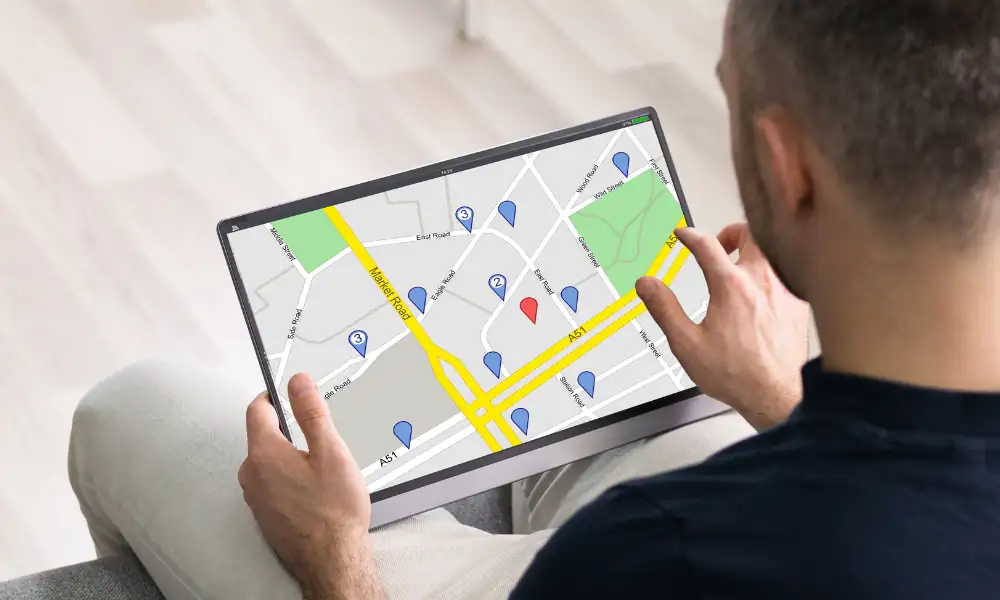Whether it’s a bus ride, carpool, bike ride, or walk, the commute to and from school forms part of a student’s daily routine. Ensuring student safety during their commute is crucial. Studies show that 31% of parents feel anxious about their kid’s commute to elementary school. Hence, transport safety directly impacts students’ overall well-being and sets the stage for a positive learning experience. A secure journey encourages a conducive environment for focused learning and contributes to the overall sense of community within institutions. The integration of technology into the daily commute to school enhances efficiency and also necessitates a vigilant focus on safeguarding students. Active engagement with digital transport management ensures that stakeholders (such as parents, guardians, educators, and administrative staff) can monitor the children’s journey in real-time. By proactively employing digital tools, educational institutions take an assertive step toward creating a secure environment for students.
Real-time Monitoring for Enhanced Safety
Real-time monitoring is a crucial factor in protecting student safety during transportation. By actively employing digital transport management systems, educational institutions gain immediate insights into bus locations and activities. This facilitates a proactive response to potential risks that might affect students on their commute. The significance lies in the seamless relationship between physical transport and digital oversight, providing stakeholders with a comprehensive understanding of the student’s journey. This proactive strategy reassures parents and establishes a robust foundation for prioritizing student safety during their daily commutes.

Geofencing: Creating Safe Zones
Through geofencing technology, educational institutions create virtual perimeters, ensuring that students remain within predefined boundaries during their commute. The utilization of geofencing actively monitors the students’ location whilst providing timely interventions through alerts and notifications. By proactively receiving real-time information, stakeholders can swiftly address any deviations from the established safe zones. This upholds the integrity of the overall framework and promotes a high level of security.
Emergency Response Systems
Integrated within the digital transport management framework, emergency response systems are designed to act as swift and decisive tools if the safety of students is jeopardized. They encompass a range of features, including real-time incident detection, immediate communication channels, and predefined protocols for timely interventions. The ability to promptly identify and respond to emergencies is crucial, and these systems ensure that necessary actions are taken with precision and efficiency.
In the event of an emergency, seamless coordination between school authorities, transportation staff, and, importantly, emergency services are vital. The incorporation of GPS and telematics allows for the precise location of the vehicle during any unforeseen circumstance, enabling all parties to act in unison. This location accuracy is instrumental for emergency responders to reach the scene swiftly and provide assistance.

Challenges Facing a Digital Transport Management System
- Real-Time Connectivity: Ensuring a consistent and reliable real-time connectivity is crucial for the effectiveness of digital transport management software. In areas with limited connectivity, such as rural regions or dead zones, the accuracy of tracking features may be compromised, potentially leading to delays or inaccuracies in monitoring bus locations. Mitigating this challenge involves implementing offline functionality, caching mechanisms, and alternative communication methods to allow smooth operations regardless of connectivity fluctuations.
- Device Compatibility: The diverse array of devices used by stakeholders poses a challenge for universal accessibility. To address this, digital transport management software must be compatible with various operating systems and devices. Responsive design and cross-platform compatibility are essential considerations to ensure a user-friendly experience across different devices, minimizing barriers to adoption and maximizing the software’s reach.
- Data Security Concerns: Safeguarding sensitive student information is crucial in digital transport management. Striking a balance between accessibility and security involves implementing robust encryption protocols, access controls, and regular security audits. Compliance with data protection regulations is critical to instill confidence in users regarding the responsible handling and protection of their personal data.
- Maintenance and Upgrades: Maintaining the reliability and relevance of digital transport management software involves regular updates and maintenance. This includes fixing software bugs promptly, ensuring compatibility with evolving operating systems, and implementing new features or security patches. A streamlined process for software updates, coupled with effective communication to users about upcoming changes, helps minimize disruptions.
Managing School Bus Routes
When it comes to managing school transportation, one of the common concerns is when buses go off-route during the school commute. These deviations occur due to various unforeseen circumstances, such as road closures, accidents, heavy traffic, or adverse weather conditions. When buses deviate from their planned routes, it can be a cause for concern for both parents and school administrators. Such unexpected events can lead to delays and safety concerns. Thus, having a reliable and adaptable transportation management system becomes paramount.
Classter’s Transport Management is designed to address these off-route scenarios. With its real-time monitoring capabilities and intelligent routing features, Classter allows schools to promptly detect and respond to bus deviations. Now, parents and administrators can stay informed in real time about any route changes.
Classter’s Digital Transport Management System
Classter’s Cloud-Based School Bus Tracking System ensures a secure and punctual commute for students, seamlessly integrated with your School Information System (SIS). Tailored for various institutions, including kindergartens, Classter simplifies the daily management of student transportation, offering an integrated solution for bus fleet and route oversight. The system empowers administrators to compile comprehensive lists of buses, drivers, and co-drivers, facilitating efficient organization. By integrating Google Maps, multiple bus routes are easily created, while real-time GPS tracking enhances visibility into bus positions. As a safety measure, Classter incorporates a real-time messaging feature, sending automated SMS notifications to parents or guardians as the bus approaches pick-up and drop-off points or during emergencies. Elevating student security and operational efficiency, Classter’s transportation management system stands as a reliable companion for educational institutions prioritizing the safety and timeliness of their students’ commutes.
Continuous Improvement through Data Analysis
Data analytics plays a pivotal role in identifying recurring patterns and trends within the transportation system. Through the collection and analysis of data points, a comprehensive understanding of the system’s operational dynamics can be examined. Such data points include travel times, traffic patterns, and historical incident reports. This insight becomes the cornerstone for informed decision-making, enabling transportation managers to proactively address challenges and refine protocols.
In optimizing routes, data analysis unveils a spectrum of opportunities for enhancement. It identifies inefficiencies, such as unnecessary stops or congested routes, enabling the creation of streamlined and more time-efficient pathways. By employing predictive modeling, the system can adapt to changing conditions, avoiding bottlenecks, and lessening potential disruptions. This enhances the efficiency of the transportation process and also contributes to a reduction in travel time, minimizing the duration students spend in transit.
The role of continuous improvement is a commitment to refining and evolving safety protocols. Data analysis serves as the compass for this journey, offering valuable insights into the effectiveness of safety measures and revealing areas that require attention. Whether it’s identifying trends in accident-prone areas or assessing the impact of safety interventions, continuous data analysis ensures that the digital transport management system remains agile and responsive to emerging challenges.
FAQ’s
Digital transport management involves the use of technology to monitor and ensure the safety of students during their commute to and from school. It’s crucial for providing real-time insights into bus locations, proactive risk management, and establishing secure environments for students.
Classter’s system offers real-time GPS tracking, integrated with School Information Systems (SIS), automated SMS notifications for parents, and seamless route management using Google Maps, ensuring student safety and operational efficiency.
Yes, Classter’s system allows prompt detection and response to off-route scenarios through real-time monitoring and intelligent routing features, keeping parents and administrators informed about any route changes in real-time.

